Overview
In this design case, I will outline a project I led to cultivate a feedback culture in a design system, by developing a quarterly survey and implementing a collaborative decision-log, to empower the contribution of engineering, product, and design teams to the design system evolution.
Users and stakeholders
- Design team
- Engineering team
- Product team
Roles and responsibilities
Design Operations Manager: leading the effort to gather feedback and prioritize initiatives to evolve the design system.
Problem statement
Our design system was lacking a unified feedback mechanism and decision-making system, so the users could provide inputs around areas to be improved and possible solutions.
Scope and constraints
One challenge was fostering engagement and ensuring that all teams felt their perspectives were valued. To address this, I highlighted the anonymous nature of the survey and emphasized the importance of candid feedback to drive positive change and evolution of Coin.
Getting things done
Gathering context
After syncing with members of our teams, I've identified main topics that would be interesting for us to gather a better understanding over time about our system maturity, aside from considering other companies case studies.
Survey structure
With that, we've defined questions to understand a set of topics that would help us to assess our current state, and identify main topics that would be relevant to improve.
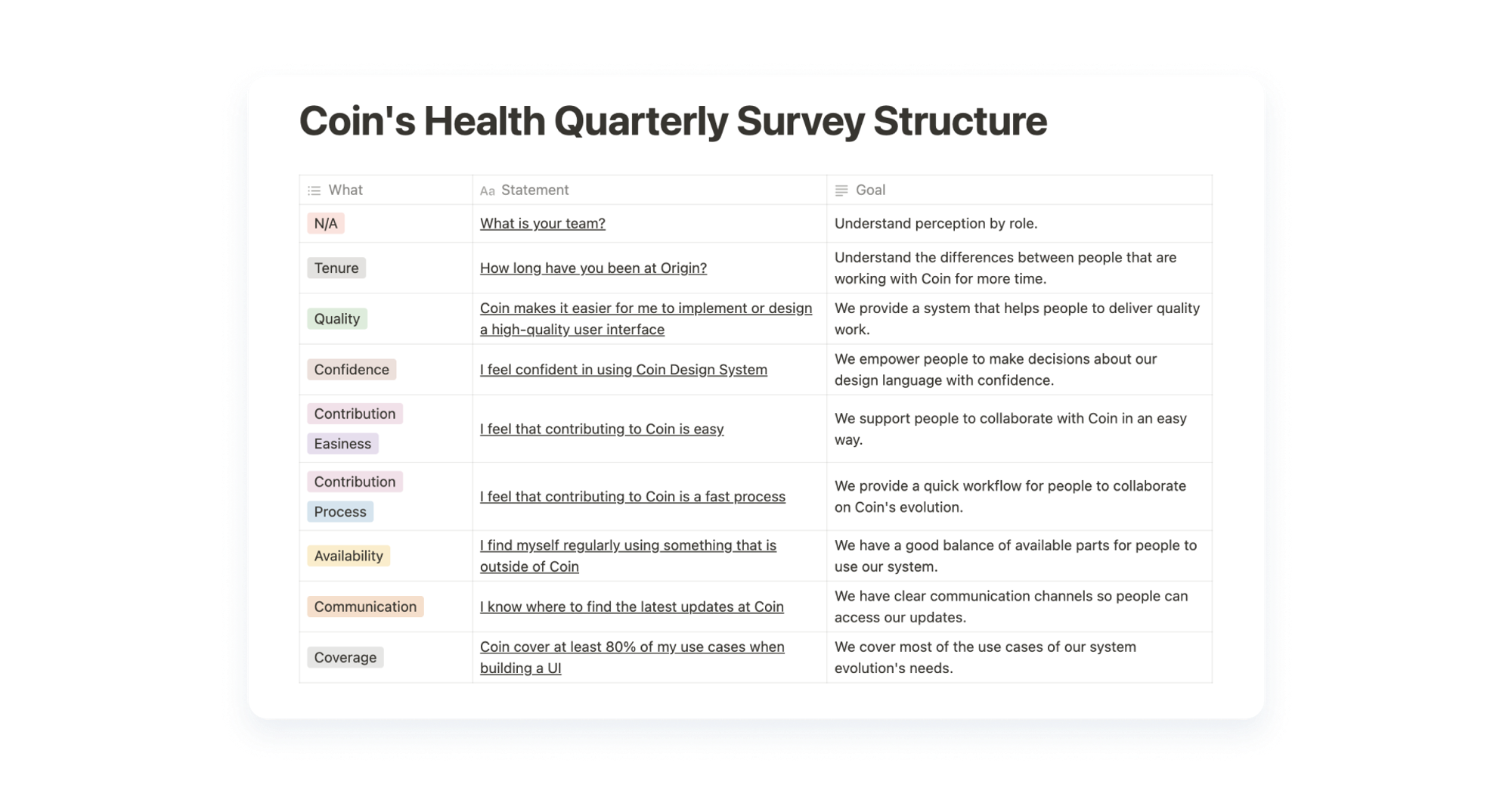
Decision-log
Also, it became evident that there was a lack of clear communication channels for sharing feedback and proposing changes. With that in mind, one of the items that we've worked on to address this was the structure of a database, where people could add topics to be discussed asynchronously, or in the weekly meeting.
To facilitate collaborative decision-making, I proposed the creation of a digital decision log. This log allowed any team member to submit topics for discussion and decision. It also documented the decisions that were made, providing transparency and accountability.
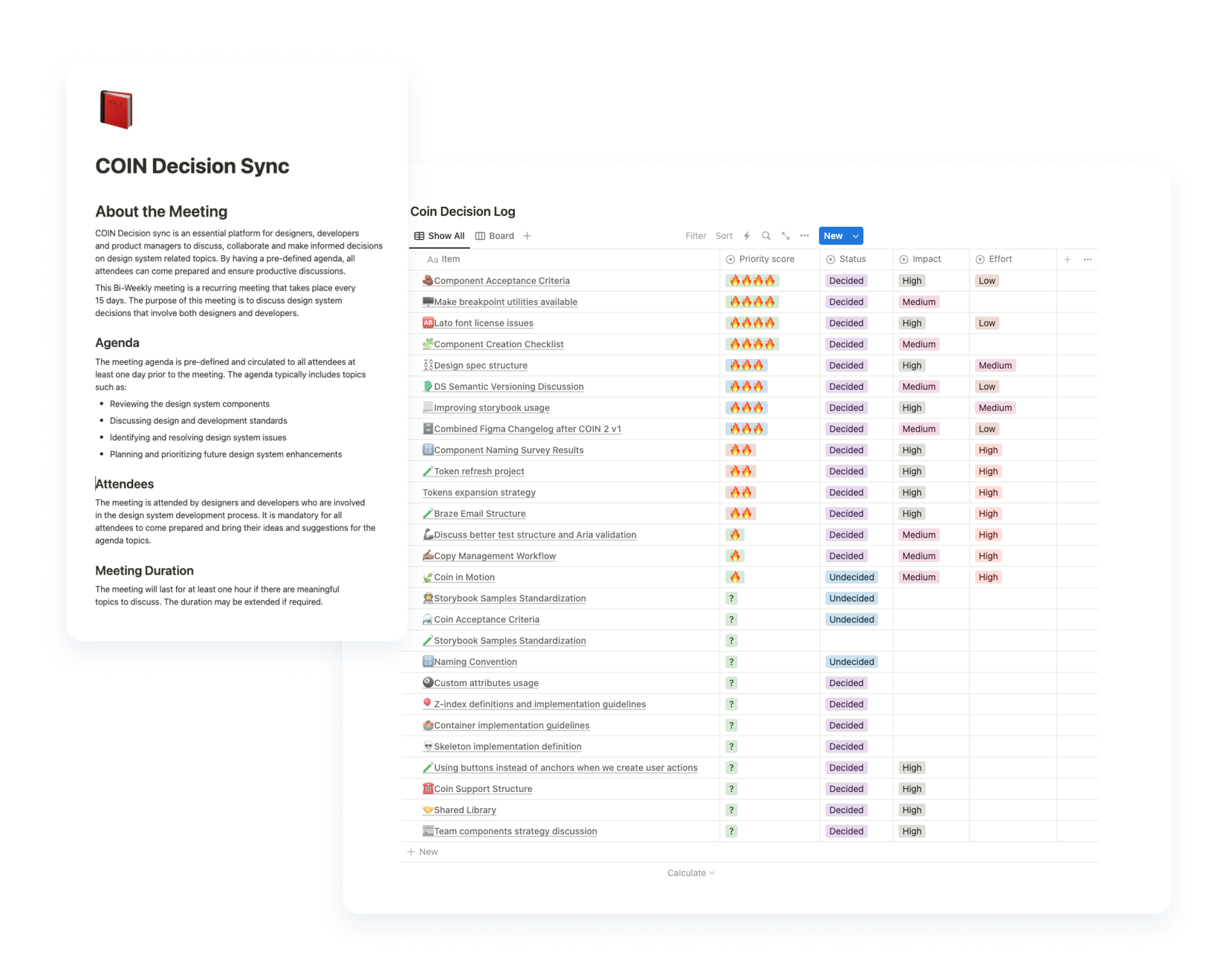
Results
For the quarterly survey, along the quarters we were able to see the impact of the initiatives around the areas.
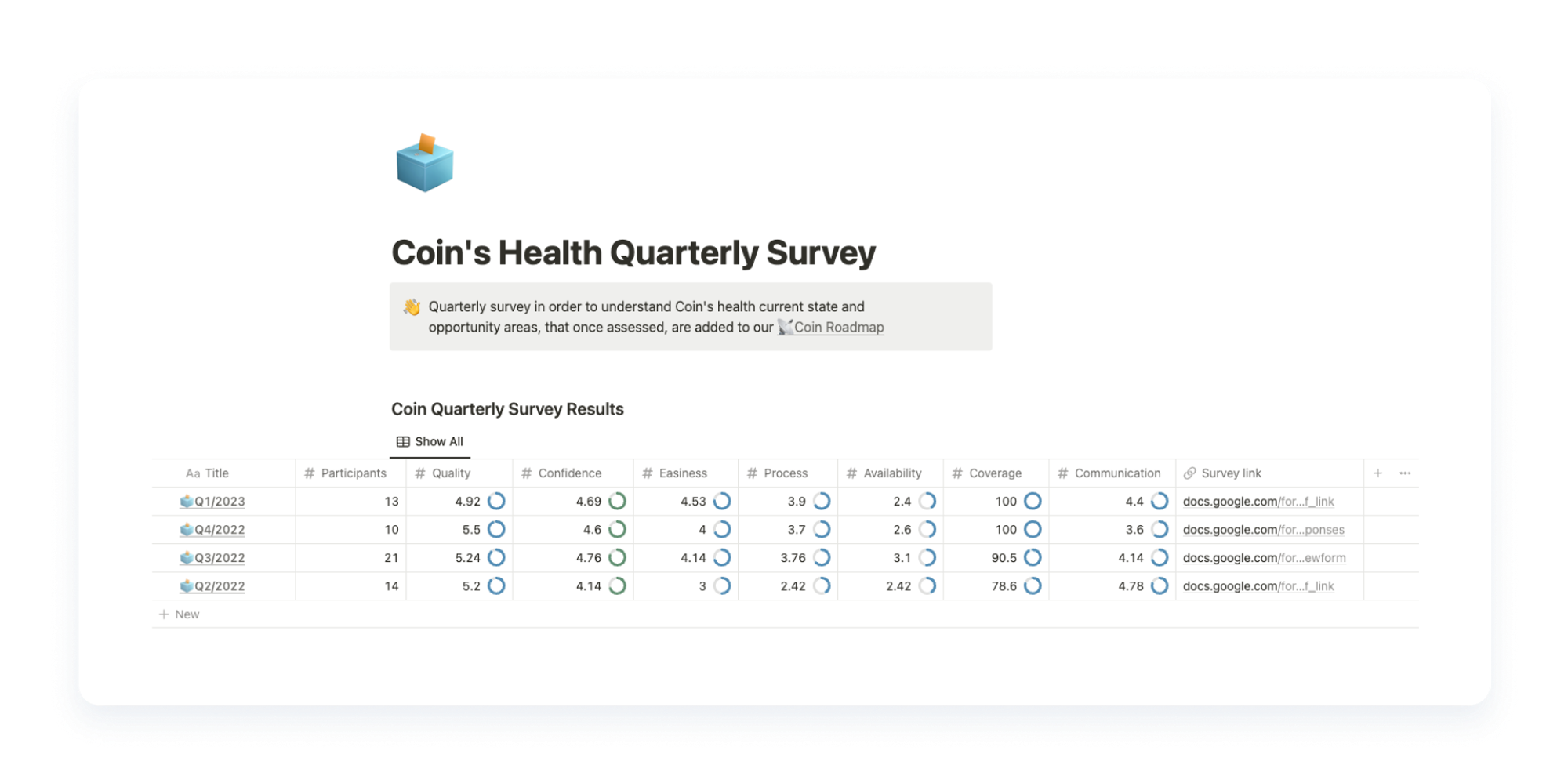
For the decision log, people were able to add topics and propose changes when needed.
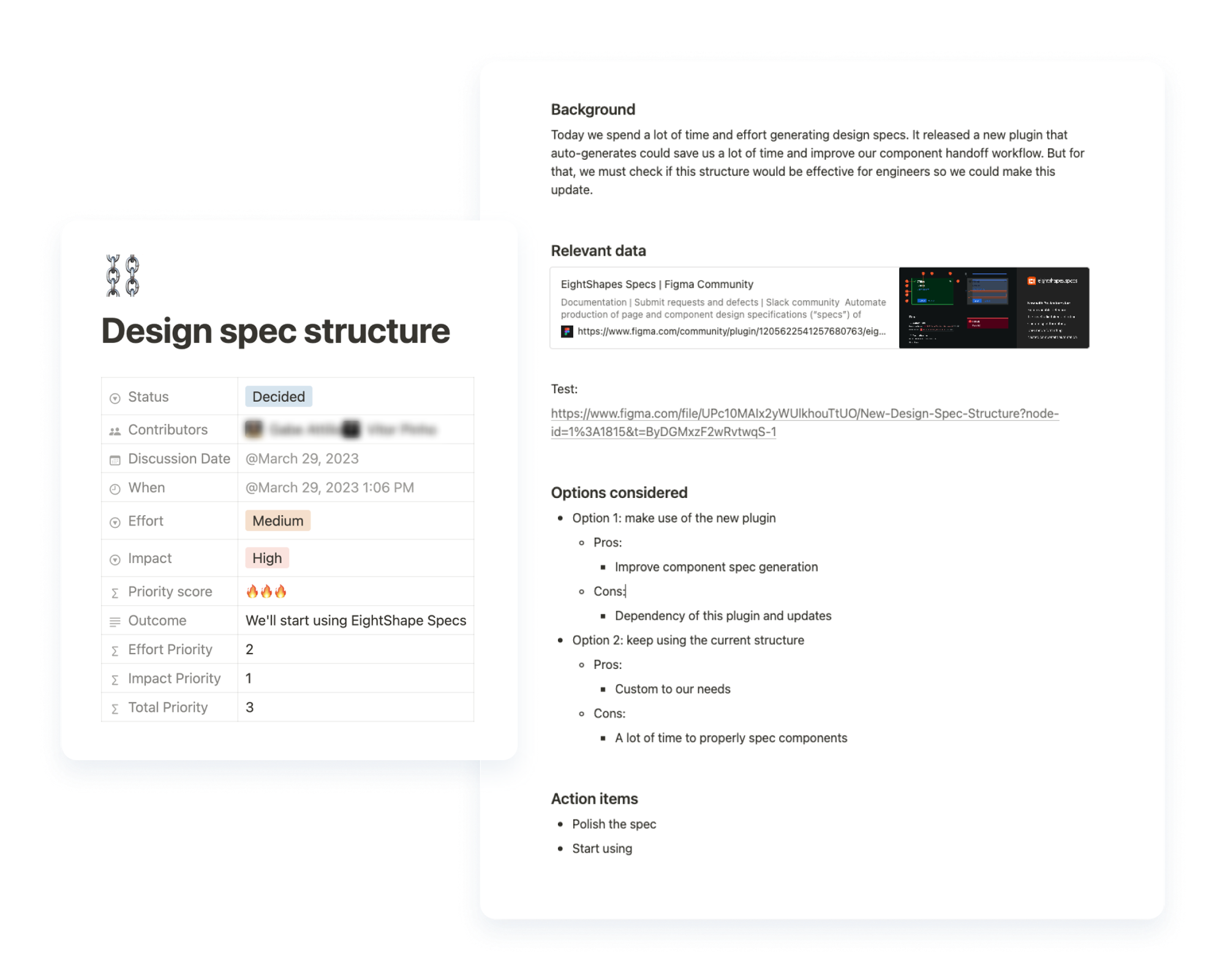
Communication and alignment
After analyzing the quarterly surveys, we've shared a report with the company, with the survey result and hypothesis, aside from potential initiatives to be worked on.
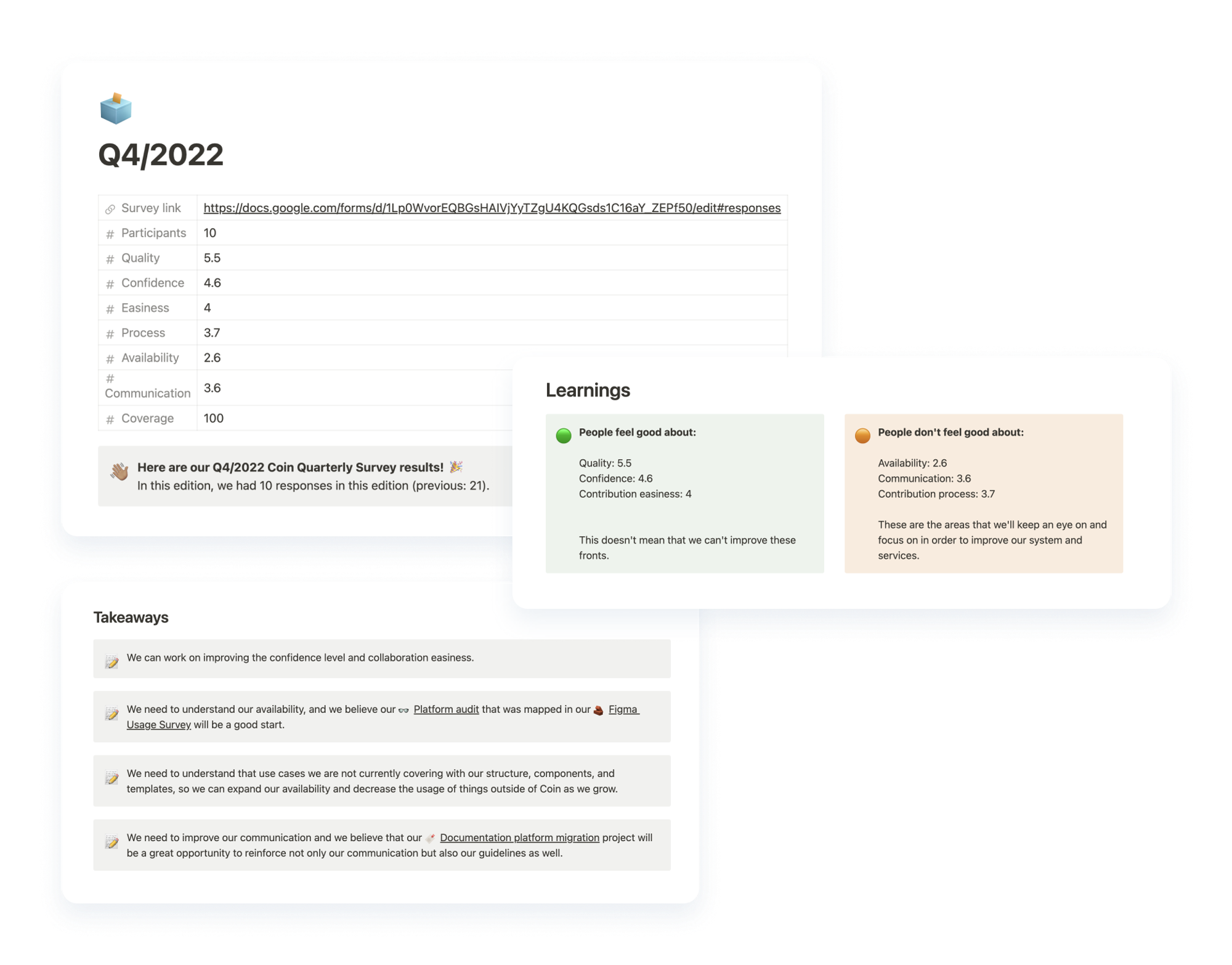
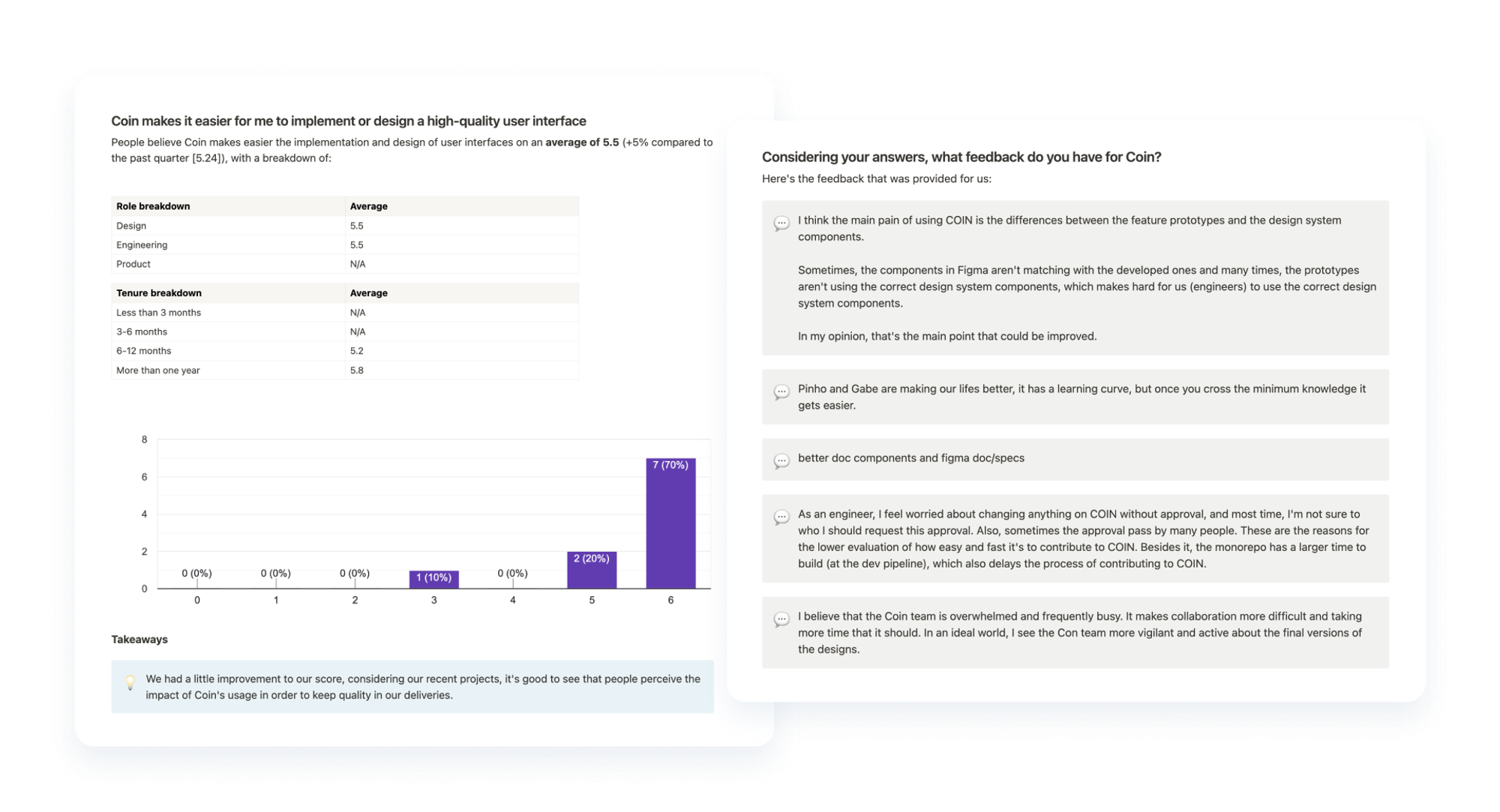
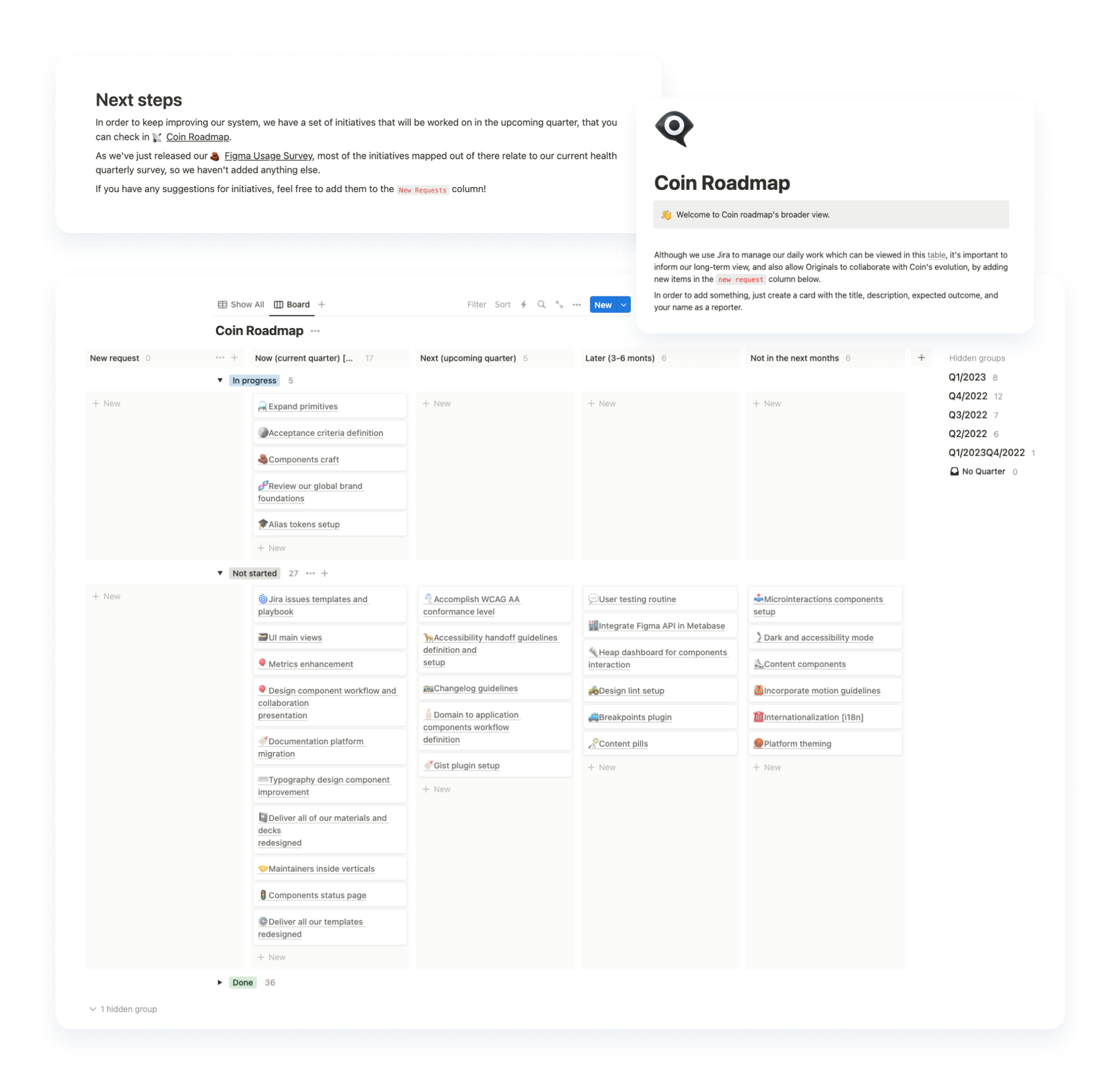
Outcomes and results
Goals achieved
- Use of user-centered design practices to empower cross-functional collaboration.
- Channels to foster feedback and identify opportunity areas.
- Developed a quarterly survey to gather insights from design, engineering, and product teams.
- Implemented a collaborative decision-log for asynchronous feedback and decision-making.
Lessons learned
- Having people collaborate sometimes can be challenging.
- Importance of having data to drive improvements.
- The need to regularly assess the impact of initiatives on the design system.